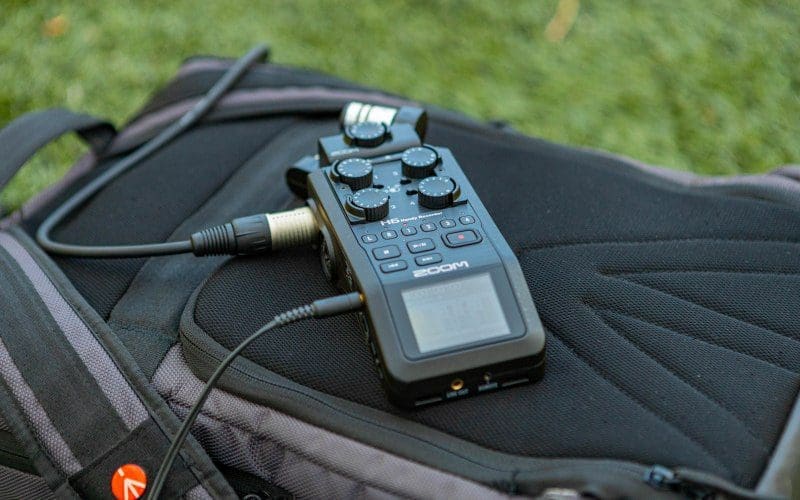
The concept of soundscapes has been an integral part of music since the early 20th century, when composers began to explore the potential of non-musical sounds in their works. Soundscapes are in everything from experimental and avant-garde music to film scores and popular music. Understanding the concept of soundscape is essential for anyone interested in exploring the creative possibilities of music, as it provides a framework for thinking about how we use sound to create meaning and evoke emotion. In this article, we will explore the definition of soundscape in terms of music. We’ll also examine its role in contemporary musical practice and discuss the meaning of soundscape in broader terms.
Definition of Soundscape

We can explore soundscapes by understanding their components, purpose, and impact on various aspects of human life. In essence, soundscape refers to the acoustic environment encompassing a wide range of sounds, whether natural, human-made, or a combination of both. It is a multidimensional concept that reflects an individual’s auditory perception and experience in a specific environment.
A soundscape comprises three main elements: keynotes, signals, and sound marks. Keynotes are the background sounds that define the character of a particular environment, such as the rustling of leaves in a forest or the hum of traffic in a city. These sounds are usually continuous and often go unnoticed unless they are absent or disrupted. On the other hand, signals are distinct sounds that demand attention, such as alarms, sirens, or bird calls. They provide essential information about specific events or changes in the environment. Finally, sound marks are unique auditory landmarks with particular cultural or historical significance for a community. Examples include church bells, train whistles, and traditional musical instruments.
A soundscape can comprise various elements, including the sounds of nature, such as birds chirping or water running, and artificial sounds, like traffic or machinery. It can also include musical elements, such as melody, rhythm, and harmony.
Soundscape Origins
Canadian composer and environmentalist R. Murray Schafer first introduced the concept of soundscapes in the 1960s. He coined the term to describe the acoustic environment, which he believed was an essential aspect of human life that we often overlook.
Schafer believed that a soundscape was a vital part of our cultural and social identity, significantly shaping our perceptions of the world around us. He also thought that soundscapes had the power to influence our emotions and well-being.
Definition of Soundscape in Music

A soundscape in music refers to the overall auditory environment created by a piece of music. It encompasses all of the sounds present in a musical composition, including the instruments, vocals, and any ambient noises or field recordings that the music may include.
To create a soundscape, musicians and producers can use various techniques, such as layering different sounds and textures or incorporating field recordings or samples. They can also use effects and processing to manipulate the sound. The goal is to create a cohesive and immersive auditory experience that enhances the overall impact of the music.
Definition of Soundscape: Use in Music
In music, soundscapes create a particular mood or atmosphere. A producer could craft a soundscape to evoke a sense of place or to tell a story. For example, the sounds of waves crashing on a beach might create a sense of calm and relaxation. At the same time, the sounds of a busy city street might generate a sense of chaos and urgency.
Creating a compelling soundscape is a critical aspect of music production, as it can significantly impact a composition’s emotional impact and overall aesthetic. A well-crafted soundscape can create a sense of atmosphere or mood. Furthermore, they can transport the listener to a specific time or place or evoke certain emotions.
Sound engineers and producers often use various techniques to create a soundscape in music. They might use effects like reverb or delay to develop a sense of space or EQ to shape the tone of different elements in the mix.
Examples of Soundscapes in Music
Some of the most notable examples of soundscapes are in ambient music, which focuses on creating a mood or feeling rather than a structured melody. Many credit Brian Eno as one of the pioneers of ambient music. His album “Music for Airports” is a prime example of the genre.
Another element of soundscape crafting is the inclusion of field recordings. Producers can incorporate sounds from the environment into music. You can hear this technique in the works of artists such as Chris Watson and Francisco López.
Soundscapes can also create a narrative or tell a story. You can find examples of narrative soundscapes in popular music like Pink Floyd’s “The Wall” and Radiohead’s “OK Computer”.
Overall, using soundscapes in music allows for a more immersive and experiential listening experience. Furthermore, soundscapes can engage the listener’s imagination and transport them to a specific time and place.
Final Thoughts
In conclusion, soundscapes in music are crucial in creating a rich and immersive listening experience for the audience. They allow musicians to paint vivid sonic pictures that transport listeners to different places and evoke various emotions. A well-crafted soundscape can add depth and complexity to a piece of music, making it more memorable and impactful. Whether it’s the sound of crashing waves, chirping birds, or the hum of city life, incorporating natural or ambient sounds into music can enhance its emotional resonance and create a sense of space and atmosphere.
Moreover, soundscapes are not limited to a particular genre or style of music. We can use them in various ways to achieve different artistic goals. From creating a dreamy, ethereal atmosphere in ambient music to adding a layer of tension and suspense in film scores, soundscapes have become an essential tool for modern-day musicians and composers. Soundscapes are a valuable aspect of music that can help artists create unique and compelling works that resonate deeply with their listeners.










